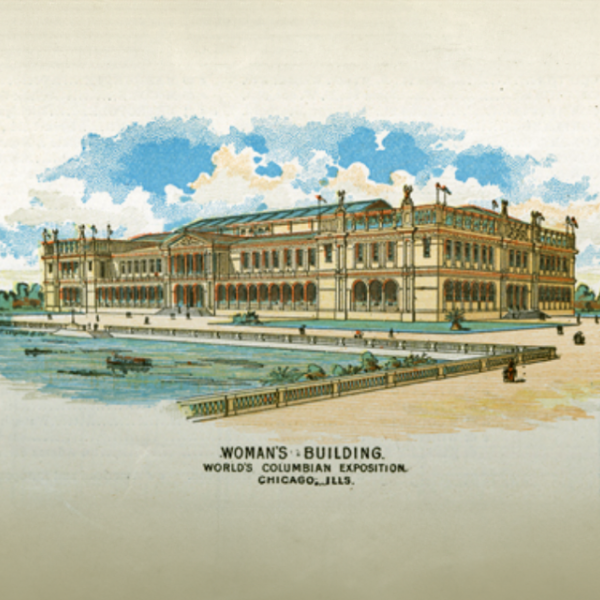Literary scholar Melanie Micir was shocked by the treasure she found while examining the papers of modernist writer Hope Mirrlees and her other archival research. Micir’s study of forgotten writings and forgotten writers recovers a lost history of queer women’s contributions to the genre of literary biography.
Melanie Micir is on a search-and-rescue mission. Micir, an assistant professor of English and a Faculty Fellow in the Center for the Humanities, works in a genre of writing that’s been dismissed as “superfluous” (biography) and with authors overlooked or underappreciated (late modernist and midcentury women). Her survey of their “biographical acts and impulses” — from published texts and established collections to drafts, outlines and annotated letters — aims to rescue their writing from the shadows of literary history. But only if she can find them first. Here, she tells us about her book-in-progress, “The Passion Projects: Modernist Women, Intimate Archives.”
Briefly, what is your book about?
This book traces a series of biographical projects undertaken by, for and about modernist women writers in the middle of the 20th century. Although these writers are better known for their work in other genres (particularly, though not exclusively, the novel), their life writing has received less attention. I suggest that this work, some of which was published and some of which remains accessible only in archives, constitutes a queer feminist counterhistory of modernist literature over the course of the long 20th century.
You’ve specifically selected biographies for your work. What is the current thinking/reputation of biographies for literary study, and how does your project challenge or extend that?
Biography is a tricky subject! Most scholars of literature rely on biographical information in both their written work and their classrooms, but there is a long theoretical history — from the New Critics to the New Formalists and beyond — of pushing back against the biographical in order to assert the sanctity, or, at the very least, the formal independence, of literature.
How did you arrive at the group of writers you’ve chosen for your project — Djuna Barnes, Sylvia Beach, Vera Brittain, Hope Mirrlees, Adrienne Monnier, Gertrude Stein, Alice B. Toklas, Sylvia Townsend Warner and Virginia Woolf?
You’ll note that all of the names listed in my last answer are men. There are exceptions to any rule, of course, but most of the women writers in my book could not assume that, in the absence of biography, the literary work they produced would speak for itself. Instead, they understood biography as an activist genre that could offer a corrective to the dominant versions of literary history that for too long had privileged the cultural production of male writers. And they were right! The biographical acts and archives produced by these women directly enabled the feminist and queer recovery projects undertaken by scholars later in the 20th century.
You’ve written that the women writers featured in your study “turned to biography as a way of writing themselves — and their friends, lovers, companions and colleagues — into a literary history from which they were being increasingly excluded.” Can you tell us more about the historical period — what works/authors were being hailed instead and what was the thinking at the time about these works?
Women were hugely important to the development of Anglo-American literary modernism. They were innovative poets and novelists, editors and publishers, patrons and fans. But phrases such as Wyndham Lewis’s “Men of 1914” or Hugh Kenner’s “The Pound Era” came to encapsulate a dominant sense of the movement as one that was bound up in masculine genius, and women writers were all but absent from courses in modernist literature for most of the century.
What are some of the little-seen or unpublished sources you’re consulting that have been surprising or otherwise impactful?
How much time do you have? I jest, but the truth is that almost everything I write about in this book is unpublished. I’ve spent the last several summers working in literary archives, and my book is, in some ways, an extended answer to this question.
Doing so much archival research has made me extremely grateful for the preservation work undertaken by so many librarians and archivists around the world: They are truly unsung heroes! One example: a few summers ago, while I was reading through the papers of Hope Mirrlees and Jane Ellen Harrison at Newnham College, Cambridge, I was shocked to discover the complete manuscript of the second half of Mirrlees’s biography of the English antiquarian Sir Robert Bruce Cotton. She had published the first half during her lifetime, but virtually all scholarship on Mirrlees was in agreement that she had never finished the second half. Yet there it was—in its entirety!
Only a few months earlier, the college archivist had had to make the argument that this manuscript was important enough to be held in the Newnham Archives. It is most fortunate for me, and for future scholars interested in either Mirrlees, Harrison or Cotton, that she made an excellent case. Archival research can be tedious, but the occasional stumble into something both surprising and impactful makes it all worth it.




